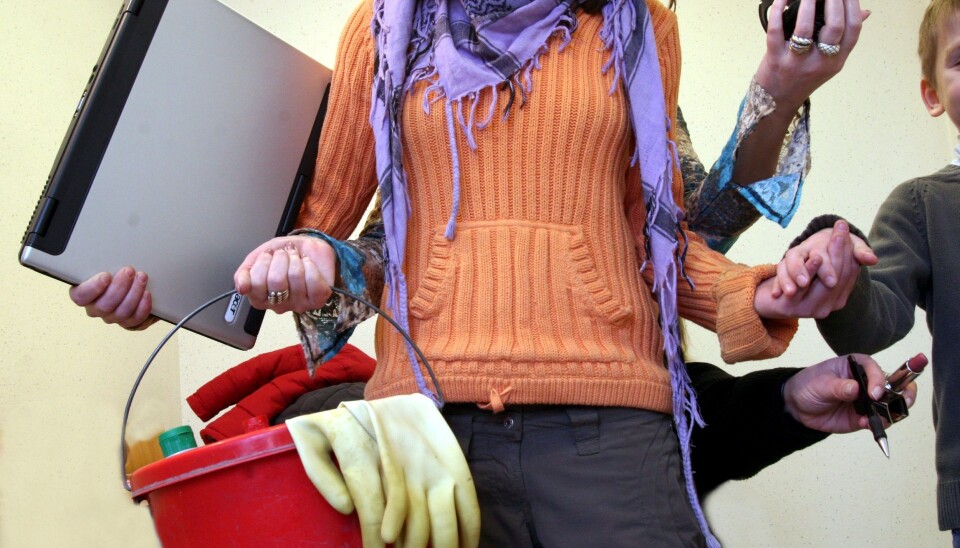
Hypnosis makes multitasking a breeze
People with brain damage can become better at performing multiple tasks by using hypnosis, new studies indicate.
Thousands of brain-damaged Danes suffer from poor concentration and memory skills, and many of them are unable to work and become socially isolated.
Whereas rehabilitation of motor skills and consultations with a speech therapist might be helpful in some areas, it does little to help these patients think and remember.
A team of Danish scientists has now set out to solve this problem by using hypnosis to provide cognitive rehabilitation.
“We're the first in the world to use hypnosis for cognitive rehabilitation of brain-damaged patients,” says PhD student Jonas Lindeløv, who is part of the Cognitive Neuroscience Research Unit (CNRU), consisting of scientists from Aalborg and Aarhus Universities.
We're the first in the world to use hypnosis for cognitive rehabilitation of brain-damaged patients.
“We have completed a pilot project with a small number of patients and the results look very promising. We are now starting a more comprehensive study with 60 patients.”
Easier lives for the patients
The rehabilitation training that the patients underwent in the pilot project while hypnotised seemed to do the trick. Four 45-minute sessions worked wonders, says Professor Morten Storm Overgaard, the head of CNRU.
All participants showed significant improvement in their work-related memory skills:
“The tests and the patients' subjective description of the treatment indicate that there is a strong effect,” says Overgaard.
The patients said that the treatment relieved some of the pressure they felt inside their heads. They no longer needed their after-dinner naps and were suddenly able to perform tasks previously near impossible. And the improvements seemed to last:
“Based on these positive results from the pilot project, we have high expectations for our current, much larger project, where we use hypnosis to rehabilitate the memory of 60 brain-damaged patients.”
New hypnosis method
The study uses a new method of hypnosis, developed by CNRU-researcher and hypnotist Rikke Overgaard. The team prefers to keep the details of the study close to their chests for now as it is crucial that the participants enter the labs with open minds. But the scientists mention some examples of how others have successfully used hypnosis on other groups of patients:
1. Phantom pains disappear. Some scientists have had success using hypnosis to relieve phantom pains in patients who have lost an arm, for instance. The hypnotist gave the patient the impression that the arm was still attached to the body to such a degree that the patient could 'see' and 'feel' it. The patients were then allowed to 'see' how the nerves healed up, so they no longer caused pain. And when the patients were recalled from the hypnosis, they felt that the phantom pains had been greatly reduced.
2. Paralysed hands can move again: Patients, who following a brain damage have had their hands and feet paralysed, have recovered some of the control and feeling after being hypnotised. They are now more able to lead normal daily lives.
3. Colour vision goes off: People can be hypnotised to 'switch off' their colour vision, so that everything appears in black and white. This is demonstrated in an experiment where hypnotised participants were presented with a coloured picture, while their brains were monitored in an MR scanner. The scans showed how an area inside the brain known as V4 lit up when the participants observed the colour picture. This is the section of the brain that is responsible for colour vision. When researchers subsequently asked the participants to imagine that the picture was in black and white, the V4 activity vanished immediately from the scans.
Sketchy details
The details of the current CNRU studies are sketchy, so readers will need to wait another six months or so for the completion of the study.
But the researchers do mention two main objectives in their research:
“Our vision is to point toward an affordable and effective mode of treatment for brain-damaged patients,” says Lindeløv. “If we can achieve significant improvements with as little as four hypnosis sessions, then that’s just fantastic.”
A second opinion
ScienceNordic asked Professor Bobby Zachariae, of the department of psychology at Aarhus University, whether he finds it plausible that hypnosis can be used in this way to improve the working memory of brain-damaged patients.
“It sounds plausible enough because hypnosis has proved highly efficient in improving concentration and focus, so I can imagine this is a good method to use. I'm excited to see if this current study really does point in that direction, and if so, how much it will benefit brain-damaged people.”
Read the article in Danish at videnskab.dk
Translated by: Dann Vinther




